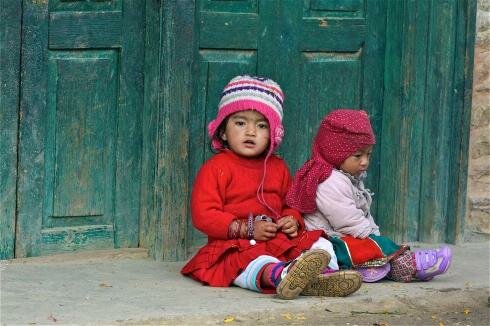Dollars for Diarrhoea
Insufficient, fragmented and misdirected investment in the water and sanitation sector hinders the fight against diarrhoea.
 Diarrhoea is one of Nepal’s leading child killers despite hundreds of millions of dollars having been invested, say practitioners.
Diarrhoea is one of Nepal’s leading child killers despite hundreds of millions of dollars having been invested, say practitioners.
While health programming has helped reduce the severity and fatality of diarrhoea among children below the age of five, the percentage of children affected by diarrhoea in Nepal has not budged in almost a decade, remaining at a stubbornly high 14 percent.
A major cholera epidemic in 2009 affected over 70,000 people in 27 of the country’s 75 districts, killing almost 380. Since then, an average 3,500 under-five children are hit by diarrhoea outbreaks every year, resulting in some 50 deaths (1.4 percent fatality rate), according to government statistics.
Some nine out of 10 deaths due to diarrhoea worldwide are traced to unsafe water, inadequate sanitation and poor hygiene, according to the UN Children’s Fund (UNICEF), all of which are lacking in Nepal.
According to the most recent census in 2011, almost 40 percent of households nationwide did not have any safe way to dispose of faeces, and while 85 percent had access to an “improved” water source, it was still not necessarily safe, said Madhav Pahari, water, sanitation and hygiene (WASH) specialist at UNICEF’s office in Kathmandu. Less than half the population had access to soap and clean water for hand-washing.
A recent self-assessment by the WASH sector in Nepal, including both governmental and non-governmental groups, blamed insufficient funding, as well as inefficient spending.
In order to achieve its targets of universal toilet coverage by 2017 and basic water and sanitation services for all, Nepal will need to double its current annual investment in the sector from US$43 million to some $85 million, concluded the 2011 assessment.
But it is not only about more money, but also more “rational” spending, said Nanda Bahadur Khanal, senior divisional engineer at the water supply and sanitation Sector Efficiency Improvement Unit of the Ministry of Urban Development (MoUD).
No coordination
Lack of coordination between the many actors has hampered effective use of funds, said Pahari.
“We have too many government entities implementing water and sanitation projects.” For rural WASH activities alone, there are three key agencies, all functioning under separate ministries and through different local bodies.
“Whose responsibility is sanitation at the broader national level?” asked Sudha Shrestha, acting chief technical adviser at the UN Human Settlements Programme (UN-HABITAT) in Nepal. “Is it the Ministry of Urban Development? Is it the Ministry of Local Development? Or is it the Ministry of Physical Planning, Works, and Transport Management? And for hygiene, is it the Ministry of Health and Population? The roles and responsibility are not explicitly defined.”
Officials have only recently identified that in addition to last year’s $43.3 million WASH budget, another $19 million was funnelled by donors to water and sanitation projects, but not in collaboration with any government agencies and, therefore, did not appear on any official expense statements.
“Externally channelled money makes up about 30 percent of investment in the sector, but its geographical coverage is not even 5 percent,” calculated Khanal at the MoUD. “That money has not been used effectively.”
Fragmentation has often led to duplication of efforts on the ground, he added. If a water tap built by one agency stops running, instead of repairing it, locals will request a different agency to build a new water supply system.
As a result, some village development committees (VDCs) are saturated with water supply schemes, while others have none, said UNICEF’s Pahari.
Poor targeting
Water and sanitation projects too often target communities most easily reached by road or air, which are already better-off, said Shrestha at UN-HABITAT. “If I go to a district for an intervention, I will choose a place where I can get quick results.”
Even with a national sanitation average hovering around 60 percent, around 10 districts have less than 30 percent of their population accessing “improved” sanitation.
“There is a poor culture and practice of evidence-based resource allocation,” according to the government’s Water Supply, Sanitation and Hygiene, Sector Status Report 2011.
“Our funding needs to prioritize unreached populations - deprived communities, remote communities, and those with weak political access,” said Khanal. “That is what we are advocating for now.”
Attention should be paid to the “sanitation-dark” stretch of districts along the central-eastern Terai flatlands bordering India from the districts of Parsa to Saptari, where over 20 percent of the country’s population resides, said Pahari. Investment for water and sanitation in these districts needs to increase at least five-fold, as estimated in the 2011 sector report.
There are also concentrated pockets of recurring diarrhoeal outbreaks in the country, particularly in the mid- and far-western hill districts of Accham, Doti, Dialekh, Bajhang, Jajarkot, and Rukum that require constant and improved disease surveillance, explained Sameer Dixit, country director of the scientific NGO Centre for Molecular Dynamics.

















